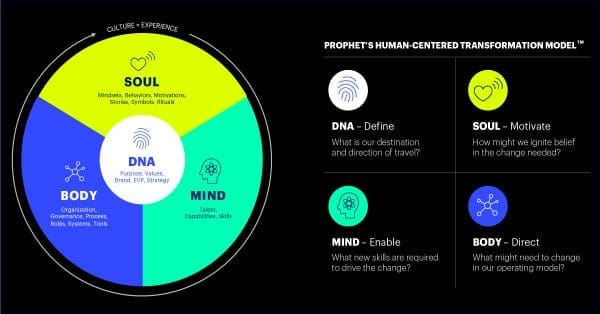BLOG
Inclusion in the Workplace: Why it Matters and Ways to Improve
To prevail amidst new technologies, company leadership needs human judgment, empathy and inclusivity.
Growing up as an Asian American in a predominately white, Catholic community, I became used to being the “other” at an early age. I was the one that didn’t fit in, the one picked last for a gym activity, the one not invited to birthday parties.
In sixth grade, I remember being particularly excited because I was invited to a birthday party. However, this wasn’t just any birthday party, it was the party of a girl who was considered popular. “Did I finally make it? Had I finally been accepted?” When I arrived, to my dismay, the birthday activities in the garden required the birthday girl and her designated team captains to hand-select members for their teams. The goal of the birthday activity was to finish one or more tasks at different stations and each of the teams got to compete against each other. When I was finally the last one to be “picked”, I didn’t feel very picked at all. I wanted to run, hide and disappear. I didn’t want to go back to school. When my parents forced me to go back that Monday, my performance was negatively impacted because I was distracted by thoughts of self-doubt, humiliation and embarrassment. All I so desperately wanted was to fit in.
What might have been more inclusive, in this situation, was if the team members were thoughtfully pre-selected in advance of the party, with varying levels of athletic aptitude and experience. To create an equitable environment, intention is paramount. To me, it would have made a world of difference.
Fast forward almost 30 years, I’ve now worked in various leadership roles at over seven organizations, and I still see this happening. You see, the problem with not including others isn’t an intention issue, the problem is more of an invisible one. We all have had different experiences and learned habits that are both conscious and unconscious. There’s often the challenge of not acknowledging the issues and/or being unsure how to effectively surface the realities. It can be very difficult to know where to start and what to do.
“To create an equitable environment, intention is paramount.”
I believe a leader is defined by how he or she chooses to use responsibility, not by his or her title. Part of that responsibility is a business leader’s obligation to embed “inclusion” into the systems, processes, rituals and symbols of an organization. Inclusion increases employee engagement, belonging and helps create an environment where people can show up as their authentic selves.
When people have the psychological safety to fully express who they are, they do better work, they come up with better ideas, they work better together and cross-functionally. This ultimately drives improved business performance. For organizations to prevail in the future, company leadership will need human judgment, empathy and inclusivity to achieve their full potential amidst new technologies, increased demands and competition, constant changes in customer needs and the expectations to do this all faster and better.
At Prophet, we leverage our Human-Centered Transformation Model to do just this.

Four tips on how to embed inclusion at your firm and with your clients:
1. DNA represents the Purpose, Values, Brand, Strategy and EVP that should direct the organization. Each one of should work to support inclusion. Many organizations have started to weave diversity into their purpose statements, for instance. You might spend a lot of time and money on diversity, but if you don’t have the “inclusion” part right, that diversity goes out the door, literally.
2. MIND is about having the right skills, talent and capabilities to drive the change. To do this internally, ask yourself: Do we have the right set of diverse skills, gender and talent in our pursuit team? Do we have a good balance of shared experiences and perspectives on our account? We should be investing the same amount of time matching talent and skills with including people from various backgrounds, experiences and cultures. If you look at your organization’s talent strategy and notice in the data that there might be certain groups of people leaving the organization at a faster rate than others, you should ask yourself and your clients: Do they have the right tools and opportunities in place to be successful here? Have they been invited to have a voice and decision-making authority in visible ways?
3. BODY is the processes, systems and tools in place. As a seasoned management consultant, we get the opportunity and privilege to solve complex business problems including re-designing systems that don’t incorporate inclusion at the heart of it. For example, Prophet has created a change champion program as part of our strategy to revamp the culture of a tech client. As advisors to the organization’s top leadership, we ensured that our team was mindful and intentional about including representation not only from each global business unit but also from the organization’s employee geography, race, tenure and gender. We also set about improving performance management and career development processes ensuring that it is more than “what you do” but “how you do it” while also linking it back to the organizations’ DNA.
4. SOUL is the mindsets, beliefs, rituals and symbols that ignite motivation and belief. Inclusion efforts must show up in a company’s daily routines and rituals. Some steps are simple, such as using preferred gender pronouns in LinkedIn and Zoom handles and during introductions at internal and client meetings. Others take more thought and require questions like: How representative is the group pitching new business, for example, or meeting with vendors?
FINAL THOUGHTS
Changes in language and behavior go a long way to normalize inclusivity. However, there isn’t a single definitive roadmap. Each company must find its way to inclusivity.
Prophet’s annual global research on culture transformation has shown that unless it’s powered by many different voices–with cross-collaboration among geographies, functions and diverse employees–it won’t be successful.
This isn’t just a relatively new discipline. It’s intersectional, complicated and ever-changing. Missteps are inevitable and cultural change is inherently complex. Inclusivity is an essential tool for any company that hopes to grow and succeed in the future.
Attracting and retaining today’s top talent requires organizations to be laser-focused on fostering an inclusive culture. Our Organization & Culture experts can help, get in touch.
